Despite being only eight films old in the industry, Alfonso Cuaron commands the rare reverence afforded to greats like Spielberg and Scorcese. The Mexican filmmaker started his career with ‘Solo con Tu Pareja’, a Spanish language film about two victims of love, who find solace in each other. It opened to positive reviews and was fairly successful at the box office. Cuaron has since attracted critical and commercial success with films like ‘Gravity’, ‘Children of Men’, and ‘Prisoners of Azkaban’. ‘Roma’, though, is the crown jewel of Cuaron’s filmography and essentially inks the year to his name.
‘Roma’ is a semi-biographical account of Cuaron’s childhood in a middle-class, white family in Mexico. It revolves around the central figure of Cleo, the selfless, devoted “manita” in a posh-house, based on Libo, Cuaron’s real-life nanny. The title “Roma” refers to the Colonia Roma, a neighborhood in Mexico City.
Cuaron first played with the idea of making a film about his childhood in the Roma neighborhood in 2006 after ‘Children of Men’. The project was shelved by Cuaron for quite some time as he struggled to coalesce the emotions of his memories. His intimate involvement in the story prompted prolonged contemplation on the idea of its portrayal in the film. In an interview with Variety, Cuaron refers to the works of Argentinian writer Jorge Borges and says, “Borges talks about how memory is an opaque, shattered mirror, but I see it more as a crack in the wall. The crack is whatever pain happened in the past. We tend to put several coats of paint over it, trying to cover that crack. But it’s still there”.
Plot
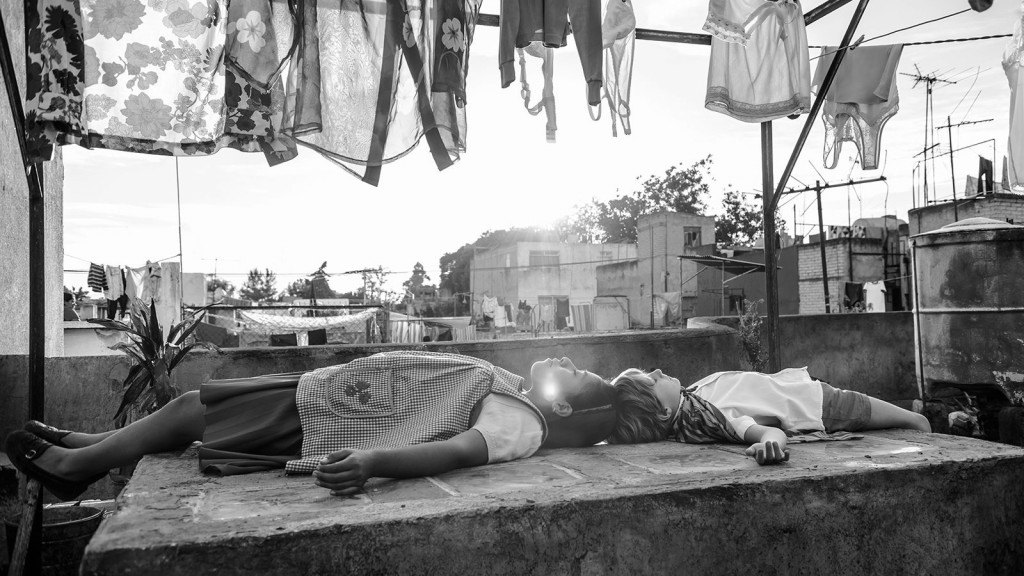
‘Roma’ is set in the year 1970 in Mexico City amidst political and social unrest in the country. The story focuses on a middle-class, white Mexican family and the domestic help of the household, Cleo. Although Cleo’s title only designates her as the housemaid, she is like a second mother of the children, who greatly value her friendship and affection. The couple, Antonio and Sofia, constantly quarrel, resulting in Antonio leaving the house on the premise of visiting a conference in Quebec. It is later revealed that he is having an affair, resulting in a divorce.
Meanwhile, Cleo’s personal life presents the promise of a great future. She begins dating the quiet and peculiar Fermin, who has a special interest in martial arts and further strengthens her bonds with the kids. When she is blessed with a pregnancy and tells Firmin about it, he leaves her and runs away. Her employer, Sofia takes her to the hospital for a checkup. Sofia and the kids, accompanied by Cleo, go to a friend’s hacienda to celebrate the New Year. While the final moments of the year wear down, a fire breaks out in the woods nearby. The whole group, along with the workers of the house, reach the spot and try to put out the fire. After Cleo comes back, she decides to visit Fermin and confront him about the situation. She takes a bus to the village where he stays. Ramon takes her to Fermin’s training area, where Fermin threatens Cleo to never contact him again, insults her, and leaves.
“I didn’t want her. I didn’t want her to be born”.
Cleo goes shopping for a crib with Sofia’s mother, Teresa. They barely make their way through the huge crowds of students protesting on the streets. Inside the shop, the mob grows violent and starts chasing people around. One such encounter happens right in front of Cleo, who witnesses a murder. She then herself faces the barrel, with none other than Fermin wielding the gun. Her water breaks and long traffic cues hold her up. She delivers a stillborn child, holding her for a few moments before letting her go.
After Sofia and Antonio’s divorce finalizes, she takes the kids and Cleo to the beach, allowing Antonio to gather his things. As they prepare to leave, they make one last visit to the beach. Sofia leaves the kids alone with Cleo, whose momentary lapse of concentration sees two of the kids struggle to swim back. Despite not knowing how to swim, Cleo risks her life to save the kids. She then breaks down and acknowledges her desire for her daughter to have never been born. The family unites with her in an emotional moment. As they go back, Antonio’s things are gone, leaving the house empty. Cleo goes to the terrace as a plane flies in the background, like the first scene.
Political and Historical Significance
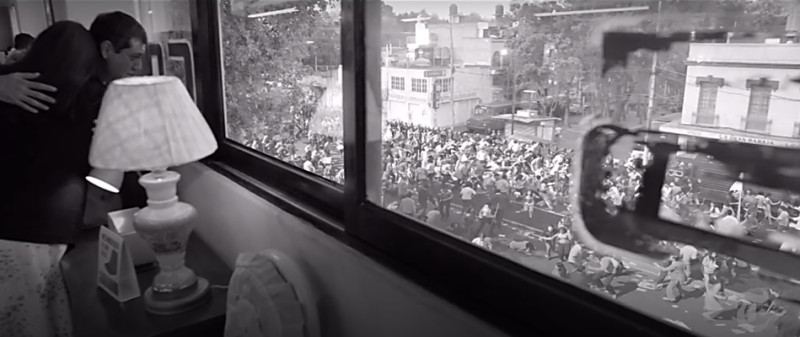
‘Roma’, in the words of director Alfonso Cuaron, is a “reconstruction of memory, of the past, through the prism of the present”. It was shot in the same places and spaces where Cuaron grew up, which gives a great authenticity to the film. The personal nature of the film for Cuaron also extended to the Mexico of the ’70s. The Dirty War had thrown the political landscape of the country into turmoil. Insurgent guerilla groups and the incumbent administration converted the streets if Mexico into a battlefield, claiming the lives of many people. Cuaron captured the Corpus Christi Massacre, where hundreds of student demonstrators were killed, in the exact moment it happened in history. The ‘Crib Shopping’ sequence has attracted universal attention for its detailed retelling of the events as they happened, but also the fear that escalated in the people.
The shot of the clocks indicates the exact time the aggression became uncontrollable and the violence broke out. Cuaron and other members of the crew have admitted the difficulty they experienced while shooting. Cinematically, the shot qualifies as an unheralded masterpiece, with its slow, aching camera movements and the perfectly orchestrated extras. The emotion truly spills over to the viewer with a hard-hitting sense of reality and melancholy. The events form an important part of the Mexican political fabric. Cuaron’s honesty in the portrayal of the events. with the backing of the crew, add another dimension to his beautifully moving drama.
Cleo: A Feminist Metaphor
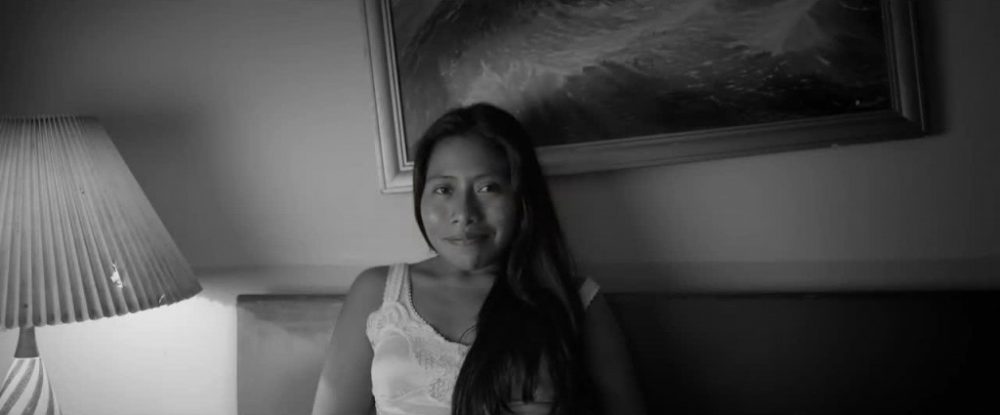
In an interview to Variety, Cuaron admitted that Cleo was an uncompromisable part of the film. Without her presence, his memories could not have been resuscitated back to life. Her character acts as an anchor not only to the central narrative of the film, but also the family she is an undeniable part of. Without her warmth, patience, and selfless devotion, the kinship would have collapsed, especially after Antonia separates from Sofia. Cleo becomes the invisible shield for the children and their grieving mother, protecting them with a resolve so strong, it could bare fireballs from the sky. The revolting nature of her compassionate constancy for the family even upend mighty ocean waves, despite not knowing how to swim.
Contemporary left-ideology places Cleo as the perfect role model for girls and women around the world. She is, as a German would say, an Alleskönner. Right from cleaning after the mess the children create, to comfort them to sleep, Cleo shoulders the gulf of responsibilities in the house. Due to the tumultuous relationship between Sofia and Antonio, the former remains depressed and irritable. Sofia’s emotional investment in Antonio prevents her from spending time with the kids and playing the role she ought to as a mother. Cleo emerges as a motherly-figure whom the kids adore and revere. She provides calmness and warmth in the kids’ life. Cleo’s personal life also creates hurdles for her. She is abandoned by Fermin when she conceives. When her water breaks, the traffic and ensuing violence hold her up, resulting in a stillborn child.
Despite these major emotional and psychological setbacks, Cleo stands like a rock between the world and the children she construes as her own. Cuaron revealed that she brought the real-life Cleo, his nanny Libo to the sets. While filming those tough scenes, Libo started crying, which Cuaron initially misconstrued as an intrusion in her personal memories. But when he asked her the reason, she said the pain of the children seeing their parents separate and fight made her emotional. Libo’s love for the kids reflects in Cleo’s intimacy on screen. The performance by Yalitza Aparicio assumes the form of myth almost, considering that she isn’t an actress by profession. Her stunning turn is undoubtedly one of the best performances of the year.
Cuaron’s Important Set Pieces
‘Roma’ features some of the most haunting scenes ever recorded on celluloid. The beauty of their interpretation lies in the variable meaning behind these scenes. The ‘Forest Fire’ scene is completely devoid of any significance to the film, while the ‘Crib Buying’ or climax scene holds great stead in the film’s narrative. I feel it is essential to dissect and discuss some of Cuaron’s brilliant set-pieces from the film. I’ve picked three such scenes, ‘Forest Fire’, ‘Training’, and ‘Delivery’.
Forest Fire
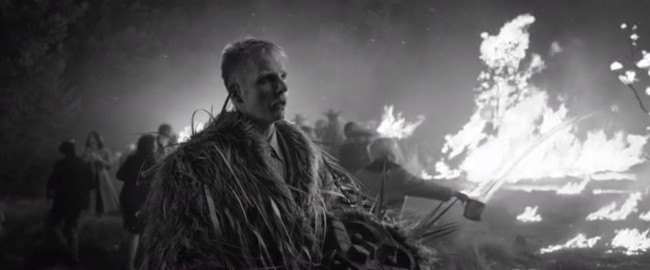
When the family and Cleo go to their friend’s house to celebrate New Year’s, an unexpected fire breaks out. The celebrations are cut short, forcing the occupants to control the fire before it becomes fatal. Irrespective of their class or status, guests, hosts, and workers alike collaborate and do their best to extinguish the fire. In the midst of all this, we see a man wearing an animal suit singing a song taking the center stage. As I see it, the scene is a random moment drawn from Cuaron’s memory of the night. As the film itself is told from a “looking back” perspective, the moment must hold some special significance for the filmmaker. The poetic expression of the shot is similar to that of Tarkovsky’s, which really elevates the film. It is the coexistence of harshness and beauty of life as the fire blazed contrasted against the majesty of song.
Martial Arts Training
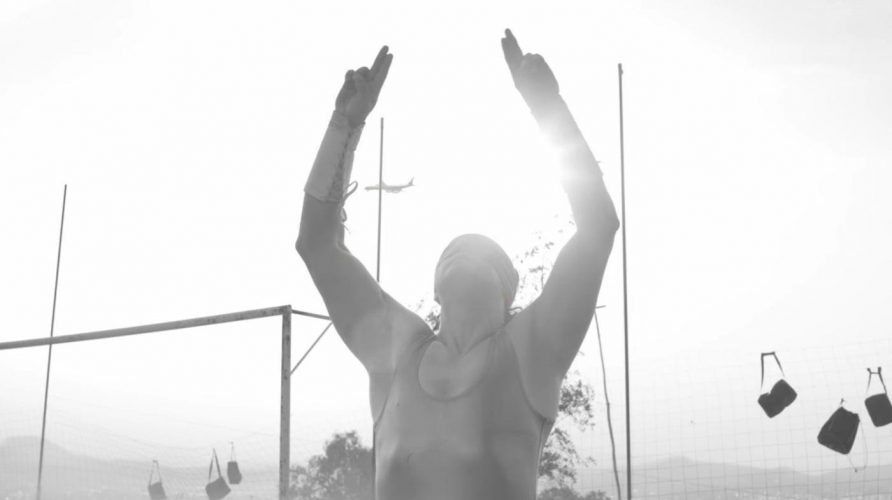
Cuaron’s creation of movement in this scene is special and deserves a mention. In an almost Kurusawaesque manner, Cuaron captures the essence of action and its latent meaning with seamless perfection. There are three things which the scene brings out. One of the overarching themes was the absent masculine, which contrasted with the present feminine in the scene with Fermin and Antonio before that. Secondly, the notion of class manipulation manifests itself in the form of regulated extremism. Fermin’s poor background implies that the void poverty creates compels people more easily to be co-opted and recruited by the forces of violence and fanaticism. It conveys how poverty fractures the fundamental makeup of society as a whole. Lastly, Cuaron also comments on the idea of blind adulation and mythification of figures in popular culture. Professor Zovek’s presence spellbound those in the audience. When one of his impossible poses is successfully imitated by Cleo but not by the trained disciples, Cuaron implies the subjugation of the sense of the latter by Zovek and people like him.
Delivery
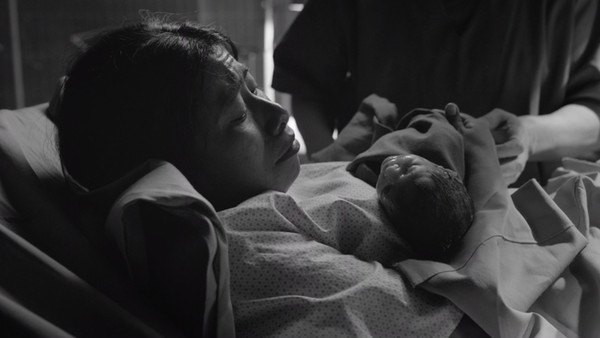
One of the most emotional and gritty movie scenes of recent times. The protests and violence hold up Cleo and delay her delivery. Although she is taken to the operation room for surgery, she births a stillborn girl. After many attempts of resuscitation, the doctors finally give up. Cleo holds her for the first and last time with tears in her eyes and the heart pounding out of her chest. The stillness of the camera provides the viewer almost a first-hand experience of this brutal event. The visceral energy almost pierces the screen to humanize Cleo’s pain and anguish.
The Ending

By the time the movie ends, Antonio and Sofia’s divorce becomes official. In a bid to make the separation easier for the children, she plans a trip to Tuxpan, the duration of which Antonio utilizes to clear out his things. Cleo accompanies the family, hoping to overcome the loss of her child. As they prepare to return and visit the beach for one last time, Sofi and Paco get caught in the waves. Cleo, who does not know how to swim, runs to their rescue, thereby risking her own life. After she does so successfully, she breaks down, surrounded by the family. They console her and remind Cleo that she is indeed a part of their family. Life continues with normalcy when they return and Cleo wakes a new morning for a fresh start.
The ending of ‘Roma’ is rather unexpected. The last set-piece in Cuaron’s gorgeous arthouse powerhouse is the first time when we see Cleo’s resilience and strength wear down. Throughout the movie, Cleo comes up against adverse situations. Both her personal and professional lives suffer as a consequence. The affectation seeing children she treats as her own devastated due to their parent’s separation, and her own little child’s death, have a devastating effect on her. After being so near to death and the premise of losing her children, Cleo clears her conscience and confesses she didn’t want her child to be born. In my opinion, the family’s situation had an impact on Cleo. Without their father, the children missed a paternal figure in their lives; without her loving husband, Sofia missed a compassionate companion. Cleo didn’t want to suffer the same fate as Sofia and her to-be-born girl.
The very last scene of the film has Cleo carrying on with her daily chores as a plane is seen flying above her. If you remember, the first scene of the film also has a reflection of plane flying above. The distance of the plane from the earth metaphorically represents the class divide that exists in the world. The plane and the earth can only become one in water’s reflection – but not in reality. Similarly, even if Cleo saves the children and is an integral part of the family, the chasm that separates people like Cleo from the upper echelons of society will remain … until of course we do something about it.
Final Word
Cuaron’s earnest, contemplative, and deliberate reconstruction of memory is beyond moving. With almost a novella-styled screenplay, ‘Roma’ unfurls with infectious grace and carries its palpable emotional fabric with great care. ‘Roma’s compassionate, beating heart is its ordinary and selfless protagonist Cleo, whose extraordinary spirit of life makes Cuaron’s story the most compelling of the year 2018.
Read More in Explainers: Green Book | ‘A Star is Born’ | ‘Birdman’

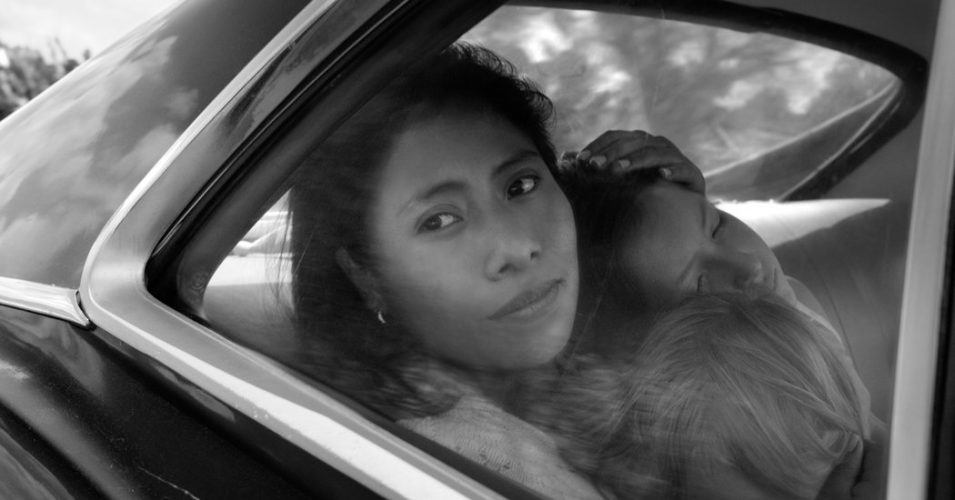
You must be logged in to post a comment.